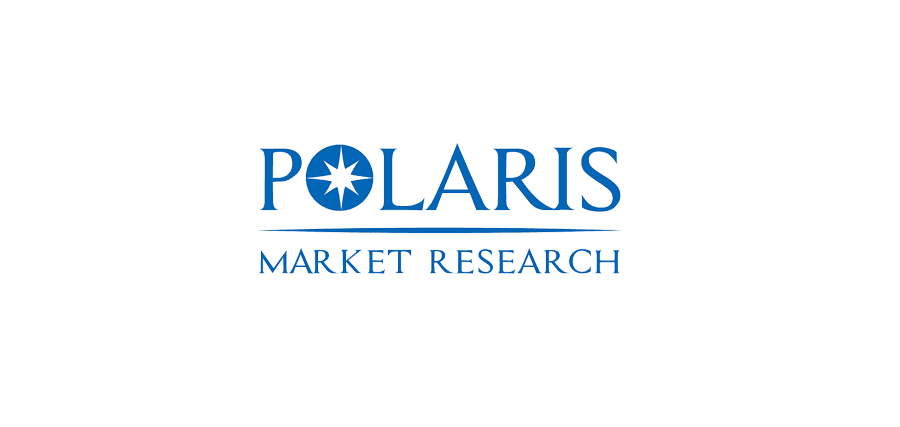Middle East and Africa Footwear Market Size, Share, Key Growth Drivers, Trends, Challenges and Competitive Landscape
Executive Summary
Data Bridge Market Research analyses that the Middle East & Africa footwear market is expected to reach the value of USD 39,694.16 million by 2030, at a CAGR of 4.7% during the forecast period.
Market Overview
The MEA Footwear Market encompasses all non-specialized, fashion, athletic, and functional footwear sold across the 70+ nations of the Middle East and the African continent. The market is defined by extreme heterogeneity in purchasing power, climatic requirements, cultural norms, and retail infrastructure.
Key Segments
-
Product Type:
-
Non-Athletic/Fashion (Dominant by Value): Includes formal wear, sandals (e.g., Arabic sandals or 'chappals'), leather goods, and high-fashion casual footwear. This segment dominates revenue in the GCC due to high-value transactions.
-
Athletic & Performance (Fastest Growing): Includes sports shoes, running shoes, and athleisure footwear. Driven by a global shift towards health and wellness, this segment is expanding rapidly across all income brackets.
-
Specialty/Functional: Includes industrial safety shoes, hiking boots, and medical/orthopedic footwear.
-
-
End User:
-
Women's Footwear (Largest Market Share): Driven by fashion cycles, social events, and high brand consciousness, especially in the GCC.
-
Men's Footwear: Stable demand, heavily influenced by traditional/formal wear in the Middle East and functional durability in Africa.
-
Children's Footwear: Volume growth driver due to high birth rates in African nations.
-
-
Distribution Channel:
-
Specialty Stores and Brand Outlets (High Value): Preferred channel for premium and luxury brands, dominating Middle Eastern markets.
-
E-commerce (Highest Growth Rate): Driven by young, mobile-first consumers and the need to bypass fragmented physical retail in Africa.
-
Unorganized/Traditional Retail: Street vendors, small local shops, and open markets, which still account for a majority of volume in many SSA countries.
-
Market Drivers and Dynamics
-
Youth Demographics and Urbanization: Africa boasts the youngest population globally, and both ME and AF are experiencing rapid urbanization. This creates a large, fashion-aware consumer base that actively seeks Western-style and branded athletic footwear.
-
Rising Disposable Income in GCC: Oil-exporting nations and diversified economies (KSA, UAE) continue to see significant growth in luxury spending and an appetite for premium foreign brands.
-
Athleisure Trend: The global trend favoring comfortable, athletic-inspired footwear for daily wear is strongly replicated in the MEA region, shifting spend away from traditional formal shoes.
-
Climate and Culture: Demand is high for open footwear (sandals, slippers) due to warm climates, and conservative dress codes in some areas maintain steady demand for specific traditional leather footwear.
Market Size & Forecast
Data Bridge Market Research analyses that the Middle East & Africa footwear market is expected to reach the value of USD 39,694.16 million by 2030, at a CAGR of 4.7% during the forecast period.
For More Information Visit https://www.databridgemarketresearch.com/reports/middle-east-and-africa-footwear-market
Key Trends & Innovations
1. Digitalization of Distribution and E-commerce Adoption
E-commerce platforms (both global and regional, such as Souq/Amazon, Noon, and Jumia) are overcoming logistical hurdles, particularly in high-density urban areas. This trend facilitates direct-to-consumer (DTC) models for international brands, bypassing traditional, high-margin retail distributors and combating counterfeit issues through verified channels (Source 2).
2. Customization and Modesty Wear
In line with cultural sensitivity, brands are increasingly designing footwear that aligns with modest fashion trends. This includes more covered designs, specialized colors, and subtle branding. Customization options, particularly in the premium segment, allow consumers to tailor footwear to local tastes while maintaining brand exclusivity.
3. Sustainability and Ethical Sourcing
Although less mature than in Western markets, demand for sustainable and ethically sourced footwear (e.g., shoes made from recycled materials, traceable leather) is rising rapidly among affluent, younger consumers in South Africa and the UAE, signaling a future premiumization opportunity.
4. Local Manufacturing and Supply Chain Localization
Governments in countries like Egypt, Turkey, and Morocco are actively promoting local textile and leather manufacturing. This trend aims to reduce reliance on Asian imports, shorten lead times, and leverage local labor cost advantages, making them attractive hubs for regional supply chains.
Competitive Landscape
The market is highly competitive and sharply segmented. Global athletic and luxury brands dominate the premium end, while local manufacturers and Asian imports control the mass-market volume.
Major Players and Strategic Focus (Simulated)
|
Player Type |
Examples (Simulated) |
Core Strategy |
Primary Market Strength |
|---|---|---|---|
|
Global Athletic |
Nike, Adidas, Puma |
Aggressive IP marketing, local sports celebrity endorsements, digital sales focus. |
Youth, Athleisure, Premium Price Points |
|
Global Luxury |
LV, Chanel, Dior |
Flagship stores in GCC, exclusive regional collections, high-value leather goods. |
Affluent Consumers, Fashion/Formal Wear |
|
Regional Retailers |
Landmark Group (Foot Locker ME franchise), Apparel Group |
Local market knowledge, mass-market positioning, extensive mall presence. |
Retail Distribution, Volume & Mid-Tier |
|
Local Manufacturers |
Turkey/Egypt-based Leather Goods, South African Brands |
Cost efficiency, tailored local designs, control over regional supply chain. |
Functional, Traditional, Price-Sensitive Segments |
Competitive Strategies
-
Digital Transformation: Leading global brands are investing heavily in localized MEA e-commerce infrastructure, multi-lingual digital marketing, and dedicated mobile apps to capture the digitally native consumer base.
-
Cultural Localization: Successful brands ensure their product lines reflect local preferences and holidays (e.g., Ramadan collections), moving beyond simply importing global catalogs.
-
Mass Market Volume Play: Competitors targeting SSA focus on durability, affordability, and extensive distribution networks that reach informal retail channels, often sacrificing margin for sheer volume (Source 3).
-
Strategic Partnerships: International companies often partner with established regional distributors (like Chalhoub Group in the GCC) to navigate complex customs, regulatory, and retail leasing environments.
Regional Insights
The MEA region must be analyzed as two distinct economic zones:
1. Middle East (GCC and Levant) – Value Market
The GCC (UAE, Saudi Arabia, Qatar) is the primary revenue driver, characterized by high brand loyalty, heavy spending on luxury and athletic footwear, and advanced retail infrastructure (malls).
-
Dynamics: E-commerce is rapidly maturing, but flagship physical stores remain critical for brand experience. Seasonal demand peaks during festivals and holiday periods.
2. Africa (Sub-Saharan and North Africa) – Volume and Growth Market
Sub-Saharan Africa (Nigeria, South Africa, Kenya) drives volume growth, but is characterized by price sensitivity and a preference for functionality and durability over pure fashion.
-
South Africa: Acts as a gateway market, demonstrating mature consumer behavior, high adoption of global athletic brands, and a well-developed formal retail sector.
-
North Africa (Egypt, Morocco): Strong local manufacturing base, blending European fashion influence with affordability demands.
-
Dynamics: Informal markets dominate distribution; growth hinges on improvements in infrastructure, banking, and mobile money adoption to facilitate e-commerce.
Challenges & Risks
1. Counterfeiting and Grey Market Operations
The high demand for branded goods, particularly athletic sneakers, coupled with weak intellectual property enforcement in many African countries, results in a massive parallel market for counterfeit goods. This erodes brand equity and undercuts the pricing power of legitimate distributors.
2. Currency Volatility and Inflation
High inflation, currency devaluation, and foreign exchange restrictions (e.g., in Nigeria, Egypt, or Sudan) make consistent inventory management, profit repatriation, and pricing stability extremely difficult for international brands importing goods priced in USD or EUR.
3. Logistical and Infrastructure Deficiencies
Poor road networks, complex customs procedures, high port costs, and last-mile delivery challenges outside major urban centers in Africa significantly inflate operational costs and lengthen lead times, hindering efficient supply chain management.
4. Fragmented Retail Landscape and Credit Risk
Dealing with numerous small, independent retailers in the unorganized sector requires managing high credit risk and complex distribution relationships, contrasting sharply with the few large, creditworthy mall operators in the GCC.
Opportunities & Strategic Recommendations
1. Strategic Localization of Design and Manufacturing
International brands should explore localized manufacturing partnerships in hubs like Turkey and Egypt to mitigate geopolitical supply chain risks, benefit from local trade agreements, and offer faster, more affordable production for the volume market in Africa.
2. Targeted Athleisure and Performance Entry
Focus investment on the Athletic and Performance segments, which show the strongest long-term growth trajectory across all MEA income classes. This involves sponsoring local sports teams, creating localized influencer campaigns, and developing durable, low-cost running shoes specifically for the African consumer base (Source 4).
3. Leverage Mobile Commerce for Market Penetration
Companies must move beyond traditional retail and prioritize mobile-first e-commerce strategies. This involves integrating with popular mobile payment systems (e.g., M-Pesa in East Africa) and building efficient fulfillment centers in strategic urban clusters to bypass challenging logistics.
4. Combat Counterfeiting via Digital Authentication
Invest in security features, such as NFC chips, unique QR codes, or blockchain-verified authenticity systems, to build consumer trust in official e-commerce channels. Offering an 'authenticated' product experience can command a premium and protect brand integrity against the pervasive grey market.
Browse More Reports:
Global Mastitis Market
Global Glucocorticoid Agonist Market
Global Ultra-High Barrier Shrink Films Market
North America Sustainable Aviation Fuel Market
North America Lung Cancer Diagnostics Market
Global Cannabidiol (CBD) Infused Edible Market
Global Garage and Service Station Market
Global Physiotherapy Examination Tables Market
Global Composite Bearings Market
Europe Ostomy Devices Market
U.S. Diet and Nutrition Apps Market
Asia- Pacific Plant Based Protein Market
Global Atomic Force Microscope (AFM) Market
Global Sailing Jackets Market
U.S. Electric Enclosure Market
Global Long Fiber Thermoplastics Market
Global Cocoa Processing Equipment Market
Global Medical Tuning Fork Market
Global Modified Bitumen Market
Global Medical Device Cleaning Market
Global Biodetectors and Accessories Market
Global Heavy Metals Testing Market
Global Glucaric Acid Market
Global Ruminant Feed Antibiotics Market
Global Aircraft Thrust Reverser Market
Asia-Pacific Frozen Ready Meals Market
Middle East and Africa Laminated Busbar Market
Global Train Signalling System Market
Global Heat Stabilizers Market
Asia-Pacific Surgical Power Tools Market
North America Frozen Ready Meals Market
Asia-Pacific Algaecides Market
About Data Bridge Market Research:
An absolute way to forecast what the future holds is to comprehend the trend today!
Data Bridge Market Research set forth itself as an unconventional and neoteric market research and consulting firm with an unparalleled level of resilience and integrated approaches. We are determined to unearth the best market opportunities and foster efficient information for your business to thrive in the market. Data Bridge endeavors to provide appropriate solutions to the complex business challenges and initiates an effortless decision-making process. Data Bridge is an aftermath of sheer wisdom and experience which was formulated and framed in the year 2015 in Pune.
Contact Us:
Data Bridge Market Research
US: +1 614 591 3140
UK: +44 845 154 9652
APAC : +653 1251 975
Email:- corporatesales@databridgemarketresearch.com



